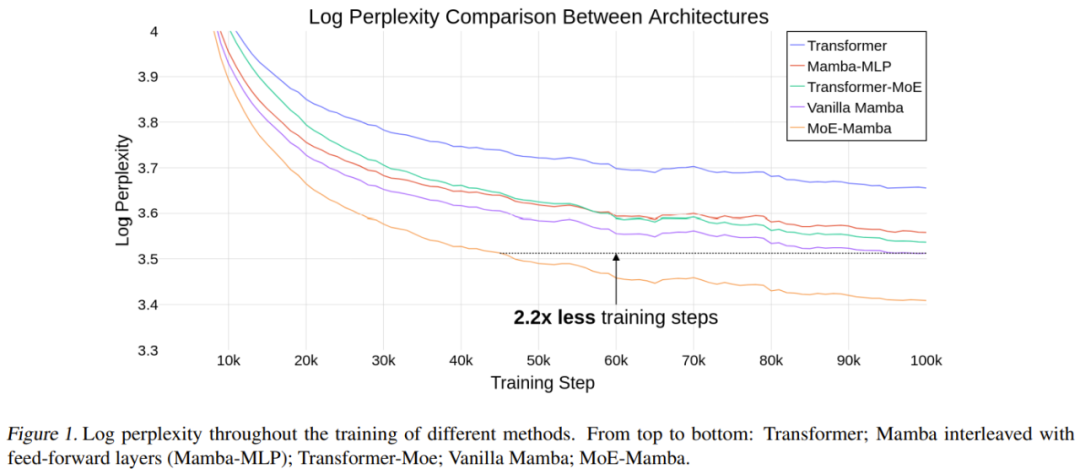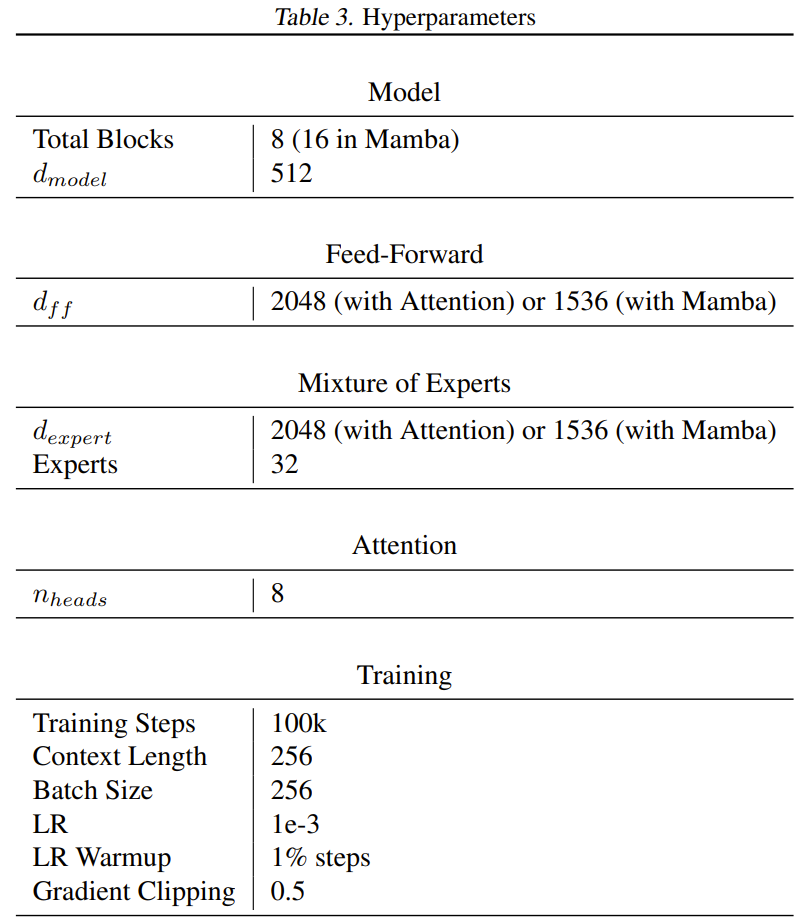
State Space Model (SSM) is a technology that has attracted much attention and is considered as an alternative to Transformer. Compared with Transformer, SSM can achieve linear time reasoning when processing long context tasks, and has parallel training and excellent performance. In particular, Mamba, which is based on selective SSM and hardware-aware design, has shown outstanding performance and has become one of the powerful alternatives to the attention-based Transformer architecture.
Recently, researchers are also exploring combining SSM and Mamba with other methods to create more powerful architectures. For example, Machine Heart once reported that "Mamba can replace Transformer, but they can also be used in combination."
Recently, a Polish research team discovered that if SSM is combined with a hybrid expert system (MoE/Mixture of Experts), SSM can be expected to achieve large-scale expansion. MoE is a technology commonly used to extend Transformer. For example, the recent Mixtral model uses this technology. Please refer to the Heart of the Machine article.
The research result given by this Polish research team is MoE-Mamba, a model that combines Mamba and a hybrid expert layer.

Paper address: https://arxiv.org/pdf/2401.04081.pdf
MoE -Mamba can improve the efficiency of SSM and MoE at the same time. And the team also found that MoE-Mamba behaved predictably when the number of experts varied.
The team conducted experimental demonstrations. The results showed that compared with Mamba, MoE-Mamba required 2.2 times fewer training steps with the same performance requirements, showing that the new method is comparable. Potential advantages over Transformer and Transformer-MoE. These preliminary results also point to a promising research direction: SSM may be scalable to tens of billions of parameters.

##State space model
State Space Model (SSM) is a type of architecture used for sequence modeling. The ideas for these models originate from the field of cybernetics and can be viewed as a combination of RNN and CNN. Although they have considerable advantages, they also have some problems that prevent them from becoming the dominant architecture for language modeling tasks. However, recent research breakthroughs have allowed deep SSM to scale to billions of parameters while maintaining computational efficiency and strong performance.
Mamba
Mamba is a model built based on SSM, which can achieve linear time reasoning speed (for context length ), and it also achieves an efficient training process through hardware-aware design. Mamba uses a work-efficient parallel scan approach that mitigates the impact of loop sequentiality, while fused GPU operations eliminate the need to implement extended state. Intermediate states necessary for backpropagation are not saved but are recomputed during the backward pass, thereby reducing memory requirements. The advantage of Mamba over the attention mechanism is particularly significant in the inference stage because it not only reduces computational complexity, but also the memory usage does not depend on the context length.
Mamba solves the fundamental trade-off between efficiency and effectiveness of sequence models, which highlights the importance of state compression. An efficient model must have a small state, and an effective model must have a state that contains all the key information of the context. Unlike other SSMs that require temporal and input invariance, Mamba introduces a selection mechanism that controls how information is propagated along the sequence dimension. This design choice was inspired by an intuitive understanding of first-class synthesis tasks such as selective replication and induction, allowing the model to discern and retain critical information while filtering out irrelevant information.
Research has found that Mamba has the ability to efficiently utilize longer contexts (up to 1M tokens), and as the context length increases, the pre-training perplexity will also improve. The Mamba model is composed of stacked Mamba blocks and has achieved very good results in many different fields such as NLP, genomics, audio, etc. Its performance is comparable to and surpasses the existing Transformer model. Therefore, Mamba has become a strong candidate model for the general sequence modeling backbone model. Please refer to "Five times throughput, performance fully surrounds Transformer: New architecture Mamba detonates the AI circle 》.
Hybrid Expert
Mixed Expert (MoE) technology can greatly increase the number of parameters of the model, and at the same time Does not affect FLOPs required for model inference and training. MoE was first proposed by Jacobs et al. in 1991 and started to be used for NLP tasks in 2017 by Shazeer et al.
MoE has an advantage: the activations are very sparse - for each token processed, only a small part of the parameters of the model are used. Due to its computational requirements, the forward layer in the Transformer has become a standard target for several MoE techniques.
The research community has proposed various methods to solve the core problem of MoE, which is the process of assigning tokens to experts, also known as the routing process. There are currently two basic routing algorithms: Token Choice and Expert Choice. The former is to route each token to a certain number (K) of experts, while the latter is to route each token to a fixed number of experts.
Fedus et al. proposed Switch in the 2022 paper "Switch transformers: Scaling to trillion parameter models with simple and efficient sparsity". It is a Token Choice architecture that combines Each token is routed to a single expert (K=1), and they used this method to successfully expand the Transformer parameter size to 1.6 trillion. This team in Poland also used this MoE design in their experiments.
Recently, MoE has also begun to enter the open source community, such as OpenMoE.
Project address: https://github.com/XueFuzhao/OpenMoE
Particularly worth mentioning is Mistral’s open source Mixtral 8× 7B, its performance is comparable to LLaMa 2 70B, while the required inference computing budget is only about one-sixth of the latter.
Although the main underlying mechanism of Mamba is quite different from the attention mechanism used in Transformer, Mamba retains the Transformer model high-level, module-based structure. Using this paradigm, one or more layers of identical modules are stacked on top of each other, and the output of each layer is added to a residual stream, see Figure 2. The final value of this residual stream is then used to predict the next token for the language modeling task.
MoE-Mamba takes advantage of the compatibility of both architectures. As shown in Figure 2, in MoE-Mamba, every interval Mamba layer is replaced by a Switch-based MoE feedforward layer.

However, the team also noticed that this design is somewhat similar to the design of "Mamba: Linear-time sequence modeling with selective state spaces"; later The model alternately stacks Mamba layers and feedforward layers, but the resulting model is slightly inferior to pure Mamba. This design is denoted as Mamba-MLP in Figure 1 .
MoE-Mamba separates the unconditional processing of each token performed by the Mamba layer and the conditional processing performed by the MoE layer; the unconditional processing can efficiently integrate the entire context of the sequence into An internal representation, while conditional processing can use the most relevant experts for each token. This idea of alternating conditional and unconditional processing has been applied in some MoE-based models, but they usually alternate basic and MoE feedforward layers.
Training settings
The team compared 5 different settings: Basic Transformer, Mamba, Mamba-MLP, MoE and MoE-Mamba.
In most Transformers, the feedforward layer contains 8dm² parameters, while the Mamba paper makes Mamba smaller (about 6dm²), so that the number of parameters of two Mamba layers is the same as that of one feedforward layer and one The attention layers add up to about the same. To get roughly the same number of active parameters per token in Mamba and the new model, the team reduced the size of each expert forward layer to 6dm². Except for the embedding and unembedding layers, all models use approximately 26 million parameters per token. The training process uses 6.5 billion tokens and the number of training steps is 100k.
The data set used for training is the English C4 data set, and the task is to predict the next token. Text is tokenized using the GPT2 tokenizer. Table 3 gives the complete list of hyperparameters.

Results
Table 1 gives the training results. MoE-Mamba performs significantly better than the regular Mamba model.

Notably, MoE-Mamba achieved the same level of results as regular Mamba in just 46% of the training steps. Since the learning rate is adjusted for ordinary Mamba, it can be expected that if the training process is optimized for MoE-Mamba, MoE-Mamba will perform better.
#To evaluate whether Mamba scales well as the number of experts grows, the researchers compared using different numbers of experts model.
Figure 3 shows the training run steps when using different numbers of experts.

Table 2 gives the results after 100k steps.

#These results show that the newly proposed method scales well with the number of experts. If the number of experts is 8 or more, the final performance of the new model is better than the normal Mamba. Since Mamba-MLP is worse than plain Mamba, it can be expected that MoE-Mamba using a small number of experts will perform worse than Mamba. The new method gave the best results when the number of experts was 32.
The above is the detailed content of MoE and Mamba collaborate to scale state-space models to billions of parameters. For more information, please follow other related articles on the PHP Chinese website!




